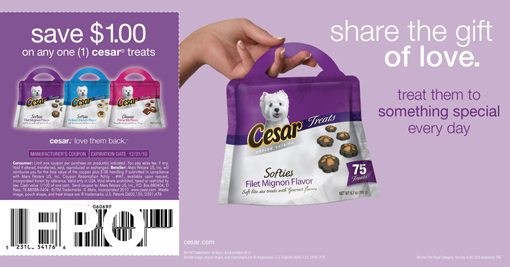Design Discussion: Brand Advertising vs. Promotional Marketing
Design is not merely the act of creating attractive things for people to look at, that’s art. Instead, every project you work on as a designer has its own set of goals for what it should accomplish. The visuals you create are meant to help lead people in a specific direction.
Below we’ll take a look at two common goals that are pursued in advertising design. First we’ll go over the similarities and differences between brand advertising and promotional marketing, then discuss how these implications apply to your design work, regardless of what field you’re in.
Two Types of Design
Today’s discussion springs mostly from a print designer’s viewpoint but does carry major implications for anyone involved in web advertising and marketing as well.
Marketing agencies hire freelance and permanent graphic designers for all kinds of reasons, but in my experience there are two primary long-term areas of their business that require two very different types of design: Brand Advertising and Promotional Marketing.
I started out my graphic design career in promotional marketing without any knowledge whatsoever of what it entailed. In fact, it literally took me years to realize that I was thinking like a brand advertiser when I needed to think like a promotional marketer. To put some perspective on this, let’s take a brief look at what each discipline involves.
Brand Advertising
Brand Advertising is where it all begins. The key here is to understand exactly what comprises a brand. A brand is not limited to what we designers often imagine: pre-approved colors, fonts and images. Instead, think of a brand as the personality of a product or group of products. It includes the product’s messaging, target audience, goals, design and many other product-specific factors like ingredients and materials.
As an example, let’s consider a brand that I used to work with frequently: Cesar dog food (or as the brand calls it, Cesar Canine Cuisine).

As you can see, from the design we can ascertain a lot about the brand goals and personality. Obviously, there’s a strong dog presence so you instantly know the product is focused on our canine friends (more specifically small breeds). More than that though is the strong gender targeting. The feminine colors, the thin typography, the decor; all targeted towards a female customer.
Cesar’s brand is delicate and high class. The personality is all about luxury and how your dog deserves the best you can provide because he/she is always there for you.
Note that the ad doesn’t go out of its way to encourage purchase behavior. There’s no strong call to action or statements about where you can find the product. The messaging isn’t sale focused, it’s emotional and personal. The main goal of this ad is a very important concept known as “brand awareness.”
Brand Awareness
Brand awareness is exactly what it sounds like. The idea is simply to get the name and brand identity out there. Brands serve to put a face on otherwise cold and impersonal products so consumers can connect with them.
Many promotional marketing professionals are prone to underestimate the value of brand advertising. Since it’s not always overtly aimed at purchase behavior, it might seem like a waste of money. However, this couldn’t be further from the truth. Some of the most successful brands on the planet are simply those that we are the most familiar with. Coca-Cola sinks millions into brand awareness and as a result, customers are far more prone to purchase it than a cheaper, similar tasting alternative. We love Coke because it’s been with us for our entire lives. The familiar red color and smooth script font cause us perceive quality over that of the generic packaging.
As further proof, consider your own shopping experiences. Sure, if you’re tight on money, you might buy cheap off-brand products, but the products you instinctively reach for are those you’ve seen on television and billboards and in magazines and newspaper ads.
The point I’m trying to get across is that there is a legitimate ROI for brand awareness spending. Some brands execute this idea very poorly while others build massive product empires on it.
Still, alongside brand advertising, many marketing companies see incremental lift through promotional marketing as one of the most powerful tools to ensure continued purchase behavior.
Promotional Marketing
Unlike brand advertising, which focuses primarily on simple brand awareness, superiority, benefits, etc., promotional marketing is where the rubber meets the road and you really start trying to convince consumers to engage in a specific purchase event.
To see how the two are connected, let’s compare a Cesar promotional piece to the advertising piece we saw above.

This ad is classic promotional marketing. Notice the important similarities to the last piece. The colors, thin typography, carefully manicured hand, all bare resemblance to what we saw earlier. However, there are a few very important differences.
First off, notice that the entire ad is much more product focused. While the last one painted a scene and told a story, this one says “here’s our product.” Also, there’s obviously a big coupon on the left side of the ad. This is where the promotion idea comes in. Customers perceive value in saving money, which encourages purchasing behavior. Finally, to top it all off, you have not one but several calls to action. Verbs like “share,” “treat” and “save” all attempt to lightly suggest that the user go out and buy the product.
What Does This Mean for Design?
Thus far, this has all been one big, fat marketing lesson. You might be thinking that none of this is relevant to you because you’re a designer, not a marketer. However, as you can see from comparing the two ads, this has huge implications to how you do your job.
The lesson you want to walk away with here today is that everything you create inherently has with it a complex set of goals. Sometimes its brand awareness, sometimes promotional marketing, other times it will be to tell a user how to use your web service. Whatever the goals are for your project, fully understanding them and their underlying implications will make you a better designer.
Remember that your designs should not merely attempt to incorporate the goals of your client as a last minute addition, rather, your entire design process should revolve around what your client wants to communicate. The textures you select, the fonts you use, your color palette and even your layout should reflect your end strategy.
Conclusion
To sum up, brand advertising often focuses on the important concept of brand awareness. Consumers are likely to purchase products whose brands they can identify with. Conversely, promotional marketing leverages a pre-established brand in conjunction with incentives to encourage purchasing behavior. Both of these types of design are equally important and together form the basis for many marketing campaigns.
You can apply these ideas to whatever type of design you happen to engage in. Analyze the situation and structure your designs in such a way that they directly fall in line with the intentions of the project.

